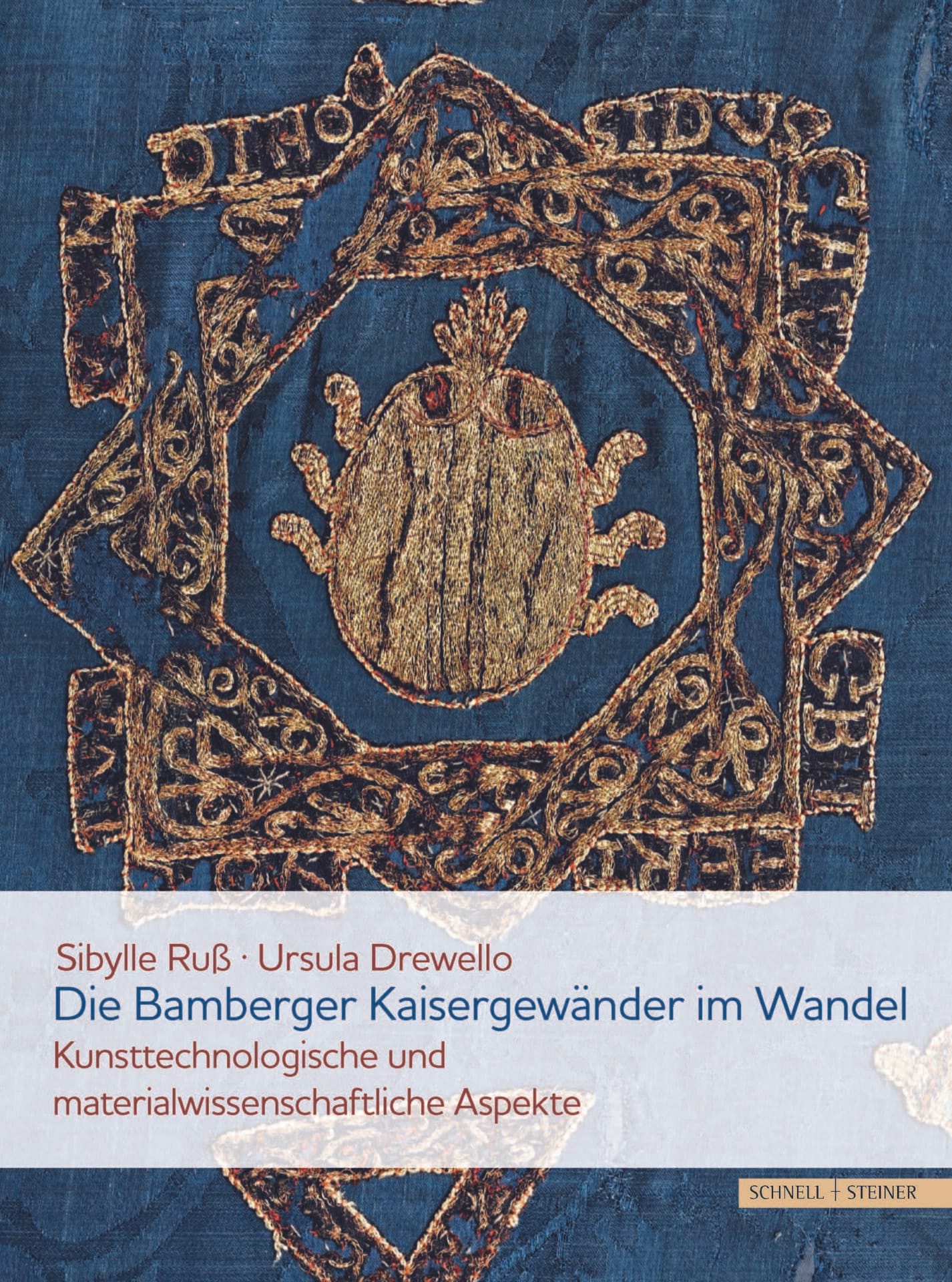FINALLY: three years and one month after I ordered the above title, it finally arrived a couple of days ago. It is the third (and last) volume on a research project regarding the Imperial Vestments kept in Bamberg. I have written two previous book reviews, which you can find here: volume 1 and volume 2. And I have written several blogs about the Imperial Vestments before. These are six embroidered textiles associated with Emperor Henry II and his wife Kunigunde. They date to the first quarter of the 11th century. Although none of the vestments have survived in their original form, they are among the oldest complete gold-embroidered vestments in the world. Hence, they are unique and pretty important as objects of study. This third volume was the one I looked forward to the most, as it contains the “Art technology and material science aspects” (i.e., the materials and how they were used) of the research. Let’s see if my expectations were met and do a book review.

The book is divided into two main parts. The first part is written by Sibylle Ruß. She is a conservator and restorer of cultural property. She began her education at an embroidery workshop and completed a Gesellenprüfung (Journeyman examination) before being trained at the Germanisches Nationalmuseum as a conservator and restorer. Sybille describes each vestment in great detail. Especially the different conservation and restoration measures that took place over the centuries. The original embroidery receives far less attention. This is a missed opportunity. Some things I miss: how were the gold threads being turned? Are the gold threads plunged or just secured on the front with a few extra couching stitches? What are the stitch lengths of the stem stitches?
A vast amount of raw data has been collected for this research. There are tantalising glimpses of this data in drawings of the individual design elements, with their gold-thread directions and couching patterns. I would have loved a CD with this additional information accompanying the book. I am also missing digital reconstructions of the original embroideries. This has been done for some other medieval goldwork embroideries (most notably the Hungarian Coronation Mantle, which is related to these Imperial Vestments). Some of the embroidery is in such bad shape that a digital reconstruction would have really helped to point out how splendid it once was.

The second part of the book is written by Ursula Drewello. She works at the Laboratory Drewello and Weißmann and was responsible for the material science part of the research project. The dyestuff analysis was done by Ina Vanden Berghe of KIK-IRPA, the Royal Institute of Cultural Heritage in Belgium. Reading about the exact composition of the gold threads, the angle at which the gold foil is wrapped around the silken core, the dye used for the silken core, etc., was really nice. But I am missing something here, too: how do these parameters compare with those of the modern gold threads available from M.Maurer in Vienna, Golden Threads, and Benton & Johnson in the UK? These three are the leading gold thread suppliers in Europe. In a way, they are the descendants of the medieval thread makers.

In the second part of the book, there is a whole chapter on design transfer. This is particularly important to us embroiderers. And whilst the chapter is not bad, one conclusion just left me speechless. On three of the vestments (Blue Kunigunde Mantle, Star Mantle and Reitermantle), remnants of the design drawings were analysed. As these remnants did not contain charcoal particles, the use of the prick-and-pounce method was excluded. Huh?! Are you kidding me? Really?!
All three vestments were made of dark-blue samite. The goldwork embroidery was executed directly on this dark silken fabric. Would any of you use black charcoal for the prick-and-pounce method? I surely hope not. You would use a white powder. And guess what? The remnants of the design drawing for two of the three vestments contained white substances. The other one used a yellow one. And these substances were (also) used to make a kind of a paint. When you paint over the dots with a similar-coloured paint-like substance, these two are likely to mix. When you only have remnants of the design drawing, how can you be so sure that they are not the result of two different steps? Instead, the author proposes that the design was being transferred using templates/stencils. However, they tend to smudge and move when used on textiles with a paint-like substance.
Now, let me be VERY clear. I am not saying that the prick-and-pounce method was used for the pattern design transfer on the Imperial Vestments. I cannot prove that. Neither does the absence of charcoal particles prove that the method was not used.

As has been the case with this project before, the inclusion of a professional goldwork embroiderer would have helped. I’ve written about early glitches before: here. Throughout the book, the authors emphasise the high quality and professionalism of the medieval embroideries. These embroideries and their medieval makers would have deserved a professional goldwork embroiderer on the team! And no, that does not need to be me. I am not the only one :).



0 Comments